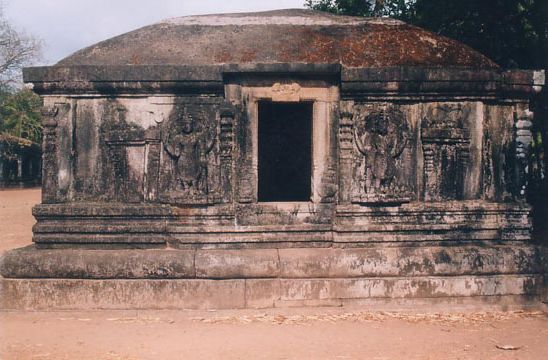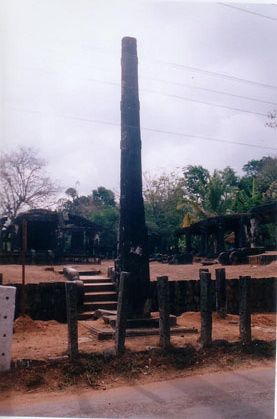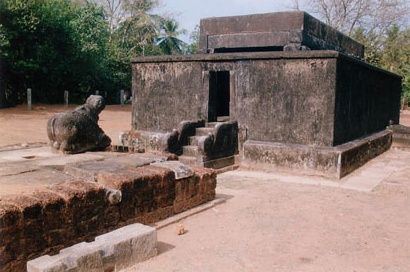|
Immersed in heritage
(We are pleased to lift an article published in
Metro plus, The
Hindu dated 6th July 2012, and reproduce here for our visitors. Ours is the only website about the place, so we feel it’s our
birthright to lift anything from anywhere that’s written about Barkur, ofcourse, with due acknowledgments.
-Team barkuronline.com)
Ratnika Sharma dusts off layers of history to discover the
secular legacy of Barkur.

As time changes and history turns its pages, many things get
lost but some remain. The small, sleepy town of Barkur, in Udupi
District, once famous for the beautiful Jain places of worship
called ‘Basadi’, is no more home for them. Surprisingly, not
many locals know where the temples are situated.
The only traces left of these architectural marvels are the
ruins of Kathale Basadi (known as the temple of darkness because
of the black granite stones used.)

There are three main structures in a big courtyard with a
victory pillar at the entrance. Archeologists say that they were
built between 8th and 12th century A.D.
Built by the Alupa rulers, the Jain Basadi, unlike most south
Indian temples built in Dravidian style, does not have gopuram.
The sanctum sanctorum is surrounded by stone walls otherwise
known as Prangan, with sloping stone pillars over it. The
original Mahavira idol was destroyed but has been replaced by
stone tablets with animal figures that are a later addition. To
the right of the entrance are ruins of structure having 24 holes
in the ground, suggesting the existence of idols of 24
Thirthankaras.

Just behind the main temple is another intriguing structure
which looks like a high and elaborate grave but when one walks
around the other side of it, the first thing to be seen is a
figure of Nandi, the bull! To find a Shiva Temple in a Jain
Basadi is overwhelming. Next to the Shiva Temple is another
structure that has a small entrance and gives you a peek into
the temple interiors. At the sides of the window are figures of
rajpals, complete with shankha, chakra and gada that indicate
that it could have been a Vishnu temple.
All this is reminiscent of a past where secularism was as
inherent part of the culture of Tulunadu.
The oldest Jain temple is opposite to a Kali temple in Moodukeri
area in eastern Barkur, that is built in the gajaprastha style
or having an apsidal ground plan. Popularised by Buddhists, this
style has a rectangular basement and semi-circular rear. It
resembles the back of an elephant, hence the name.

The 50 odd Hindu temples here follow the Dravidian style of
architecture with temples such as Panchalingeshwara having a
small “kalasha” or gopuram over the sanctum sanctorum.
Excavations done by archeological department of Karnataka have
not been maintained, though Barkur has potential to be tourist
spot. As the river Seetha flows quietly, Barkur waits for the
light of recognition, to regain the respect it once commanded,
to be dusted off the cobwebs of neglect and to offer its rich
heritage to anybody who cares to take it.
Barkur
Getting there:
Barkur is 16 km from Udupi. It can be reached by bus or train.
What not to miss:
The Jain Basadi, Panchalingeshwara Temple, Somanatheshwara
Temple, Someshwara Temple, Kalikamba Temple
Where to stay:
There are number of hotels to stay in Udupi and Manipal.
-Ratnika Sharma
More
about Barkur
1
2 3
4 5
6 7
8 9 10
Visit Foto Gallery
|





